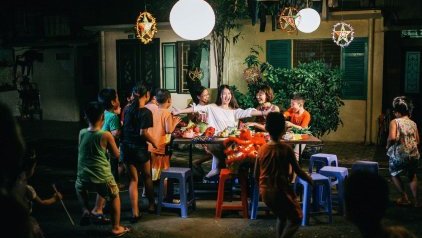What to Expect in Vietnam in Mid-Autumn Festival
Mid–Autumn is one of the biggest festivals not only in Vietnam but also in many other Asia countries such as China, Japan, Korea, etc. In Vietnam, Mid – Autumn has been become a traditional festival for the children as well as the occasion for family members to gather together, it is held on the full moon day of lunar August every year. Along with many activities and games are celebrated during the Mid-Autumn Festival.
1. Origin of Mid – Autumn Festival
Many people say that Vietnam's Mid-Autumn Festival originates from China, but in fact, Vietnamese and Chinese have different legends about Mid-Autumn Festival. Chinese mentioned the love story of Hang Nga and Hau Nghe, while in Vietnam, the story of Cuoi - Hang was told from generation to generation.
In Chinese legend, Mid-Autumn Festival has been held since the Tang Dynasty. The story told that while King Tang Ming Huang was walking around the Royal Garden on the full moon night of lunar August, he met Taoist Ye Fashan. The Taoist used magic to bring the King to the moon and the king happily enjoyed the wonderland with the graceful dances of fairies. After returning to the palace, he wrote the song “Nishang Yu Yi Wu”, ordered people to organize a lantern parade and party every 15th lunar August. Since then, Mid-Autumn Festival has become a custom of the Chinese.
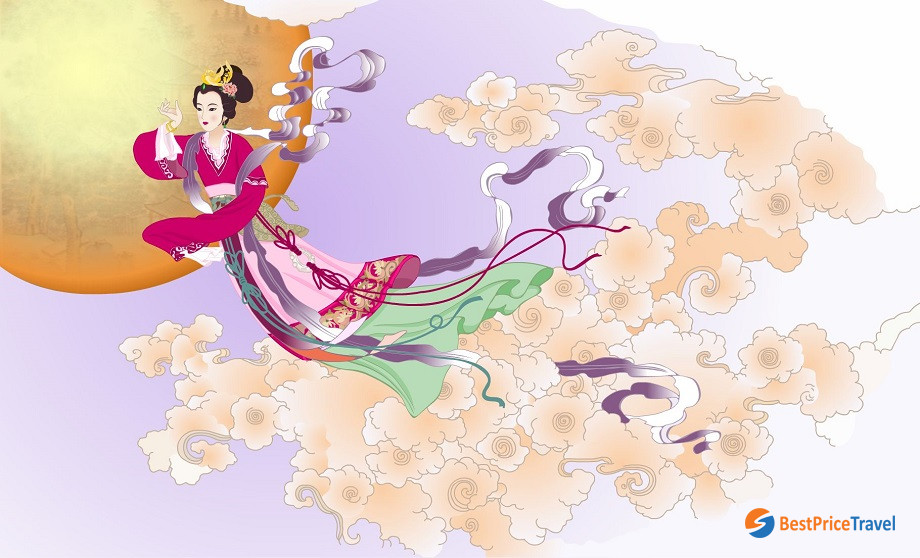
Hang Nga character
Hang Nga and Cuoi are the two main characters in Vietnamese legend. Hang Nga is a very beautiful fairy, she came to the human world when the King of Heaven holds a baking contest on the 15th lunar August. While Hang Nga was trying to learn how to make the best cake, she met Cuoi, who usually tells the lies. He lied to Hang Nga mixed all the ingredients together then baked. Surprisingly, the cake was very delicious, and Hang Nga about to come back the Heaven. Cuoi did not want to say goodbye to Hang Nga so he took her hand to prevent her from returning, but a strange power dragged him and the banyan tree to the moon. Sitting under the banyan tree on the moon all year long, Cuoi is only able to come to the human world with Hang Nga on the 15th of August of the lunar calendar.
For more details: Mid-Autumn Festival Traditions
2. Lantern
Children often parade the lantern in their villages, hamlets, and neighborhoods during the Mid - Autumn night. The lantern parade festival is usually held by local authorities or village youth groups. In some places, they often make big star-shaped lanterns or beautiful lanterns to compete with each other during the festival.
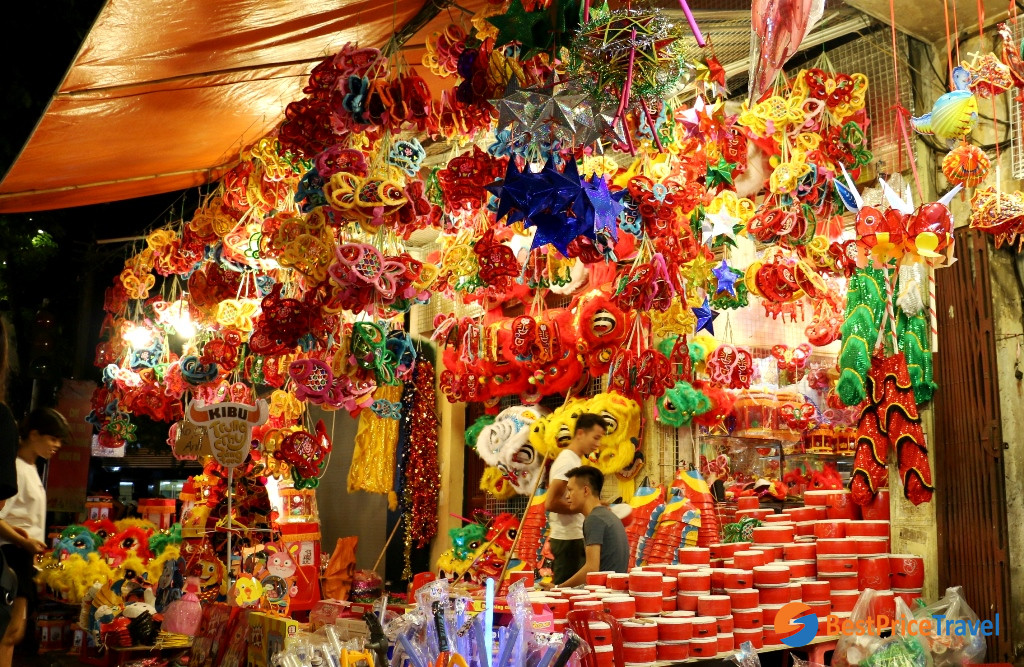
Lantern Street
In Vietnam, the lanterns have many different colors and shapes such as the star, flower, goldfish, cartoon characters, etc. Vietnamese lanterns are handcrafted from bamboo and “gio” paper, fabric and decorated by painting or embroidering. Lanterns are a sign of family prosperity and happiness. Walking along Hanoi Old quarter on this occasion, you will have a chance to admire the old streets lighted by thousands of colorful lanterns!
3. Lion Dance
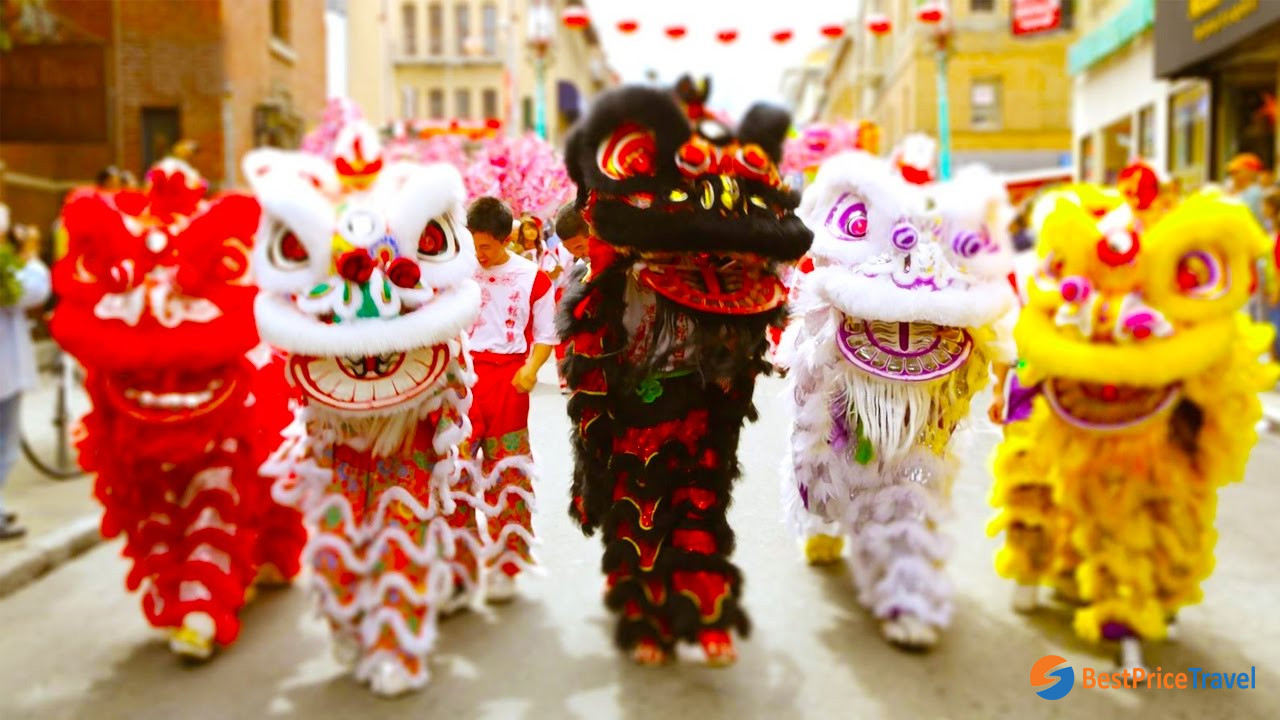
Lion Dance
In Vietnamese belief, Lion Dance represents luck, prosperity, and goodness for every home and it is also performed in Mid – Autumn Festival. Lion dance usually has a person wearing a Lion head made of paper and a long tail made of fabric dancing to the drumbeat. Besides that, there also have “thanh la”, colorful lights, five-color flags, etc.
4. Enjoy the outside party
Mid – Autumn party often has “Ngu Qua” tray which means five kinds of fruit in Vietnamese. There is a dog made of grapefruit with 2 black peas as eyes and surrounded by fruits and traditional moon cakes or vegetarian moon cakes having the pig shape. Grapefruit seeds are often peeled and skewered on steel wires, dried about 2-3 weeks before the festival, and these strings of grapefruit seeds will be burned at Mid – Autumn Festival night.
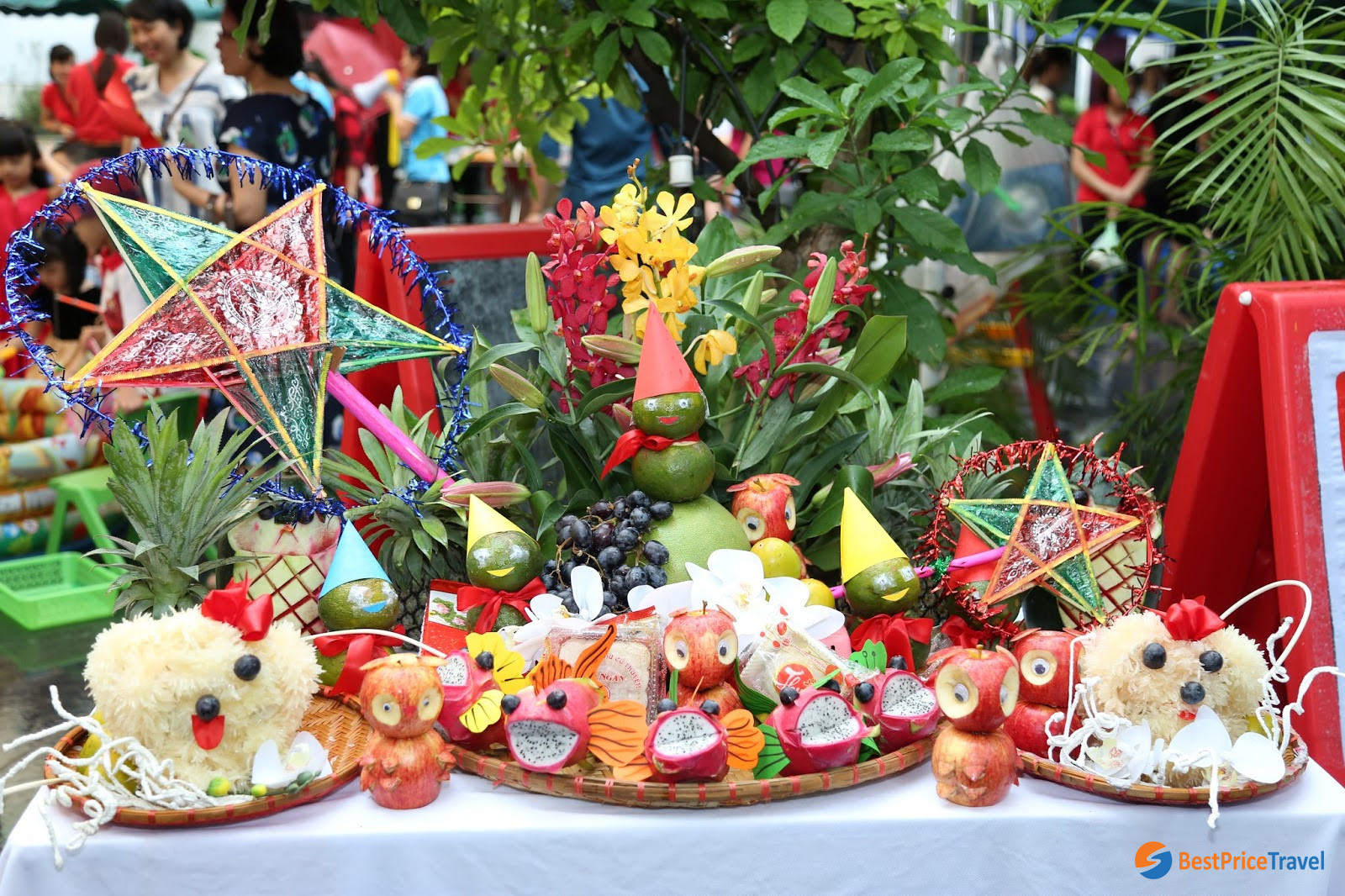
Ngu Qua Tray
Along with the outside party is a moon sighting. When the moon reached the top, it is time for everyone to enjoy the Mid-Autumn Festival party. The Mid-Autumn Festival worships the moon and the land to pray for a good life and good harvest. Gazing at the moon, you can see a black mark that looks like a man sitting under a banyan tree on the moon's surface. Children believed that it is Cuoi in “Hang Nga and Cuoi” story.
5. Moon Cake
It can be said that Moon Cake is the soul of Mid – Autumn Festival. It includes 2 kinds of cake: baked moon cake and sticky rice moon cake. The traditional filling of moon cakes is usually mung beans (or lotus seeds) or mixed with ham, Chinese sausage, lemon leaves, squash jam, sugar, etc. Each moon cake box usually includes both baked and sticky rice moon cakes, and on the night of Mid – Autumn Festival, the cakes are eaten with other items such as nuggets, bananas, grapefruit, etc.
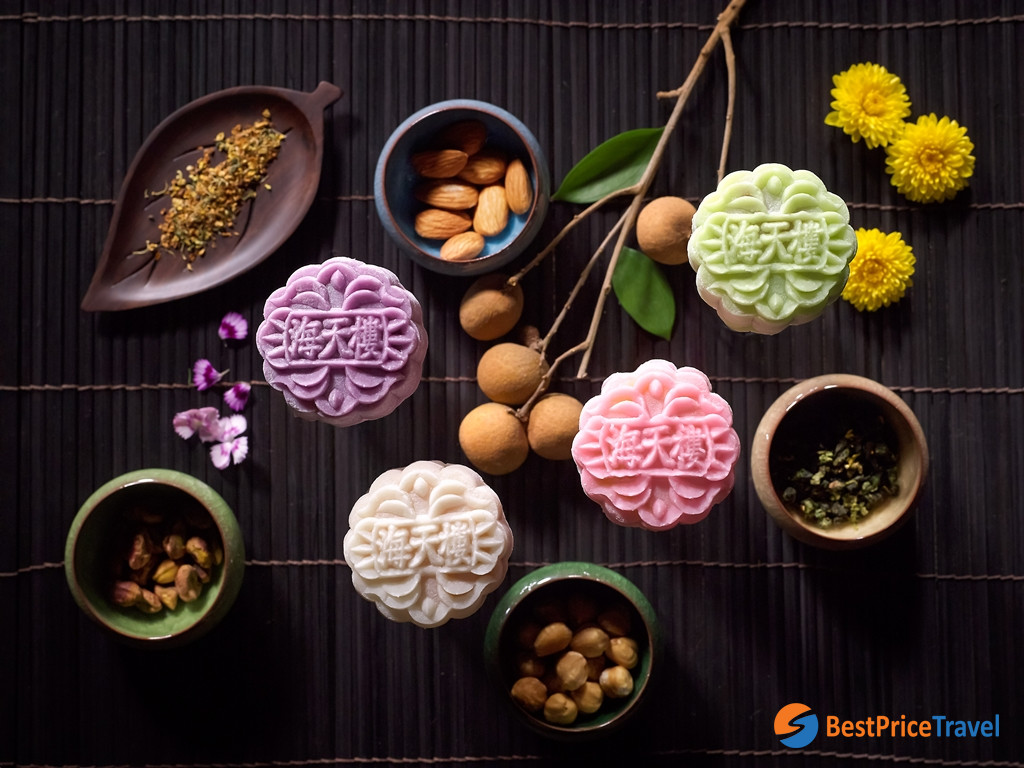
Moon Cake
Vietnam also has jelly moon cake, also known as the fresh moon cake, which has a similar shape to traditional moon cake but is made from jelly. The filling of jelly moon cake is like baked moon cake but it is softer, more varied, and cooked before adding to the cake. It must be easy to eat with jelly such as flan (caramel), mung bean, milk jelly. This type of cake has no preservatives so it can only be used for a short time.
Read more: Top 10 Most Appetizing Mooncake Flavors in Vietnam
Being the festival of children and family members, in the past, Mid-Autumn Festival is also an opportunity for people to admire the moon and predict the harvest and destiny of the nation. If the moon is yellow, this year will have a good crop; if the moon is green, It will have natural disasters; and if the moon has a bright orange color, the country will prosper in this year.
Check this out for top Vietnam tours to join Mid-Autumn Festival.
Thanh Van
(Image source: Internet)







